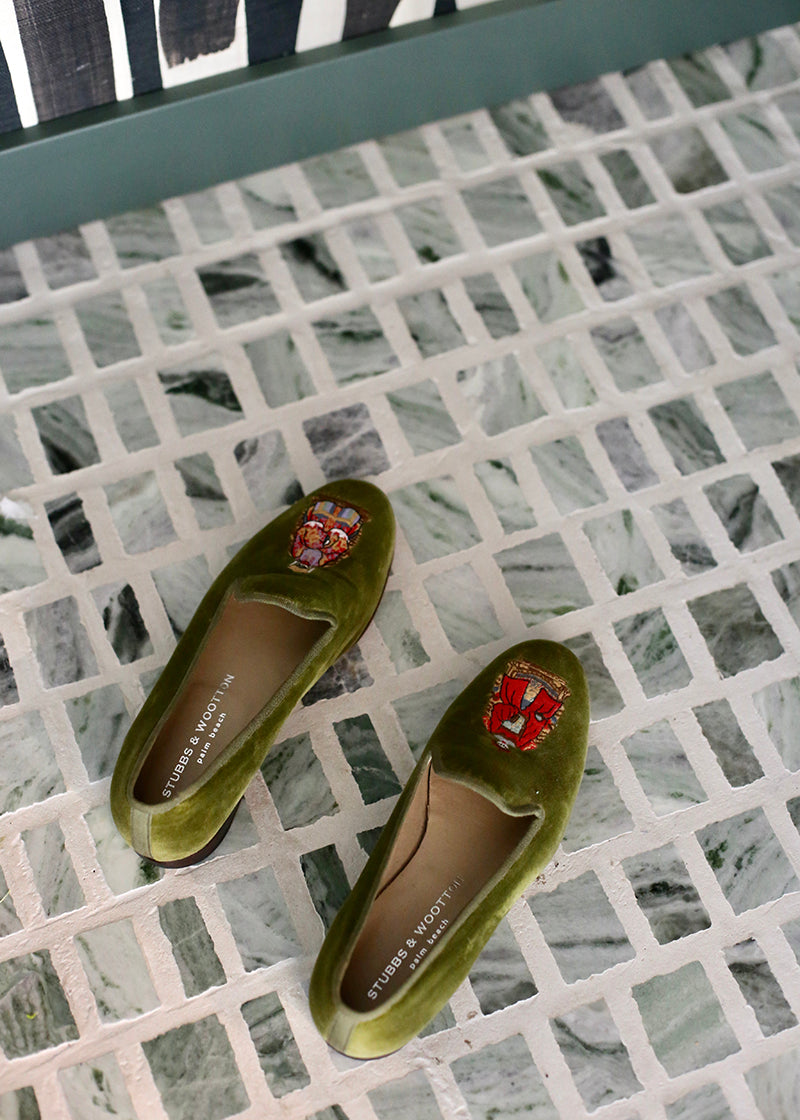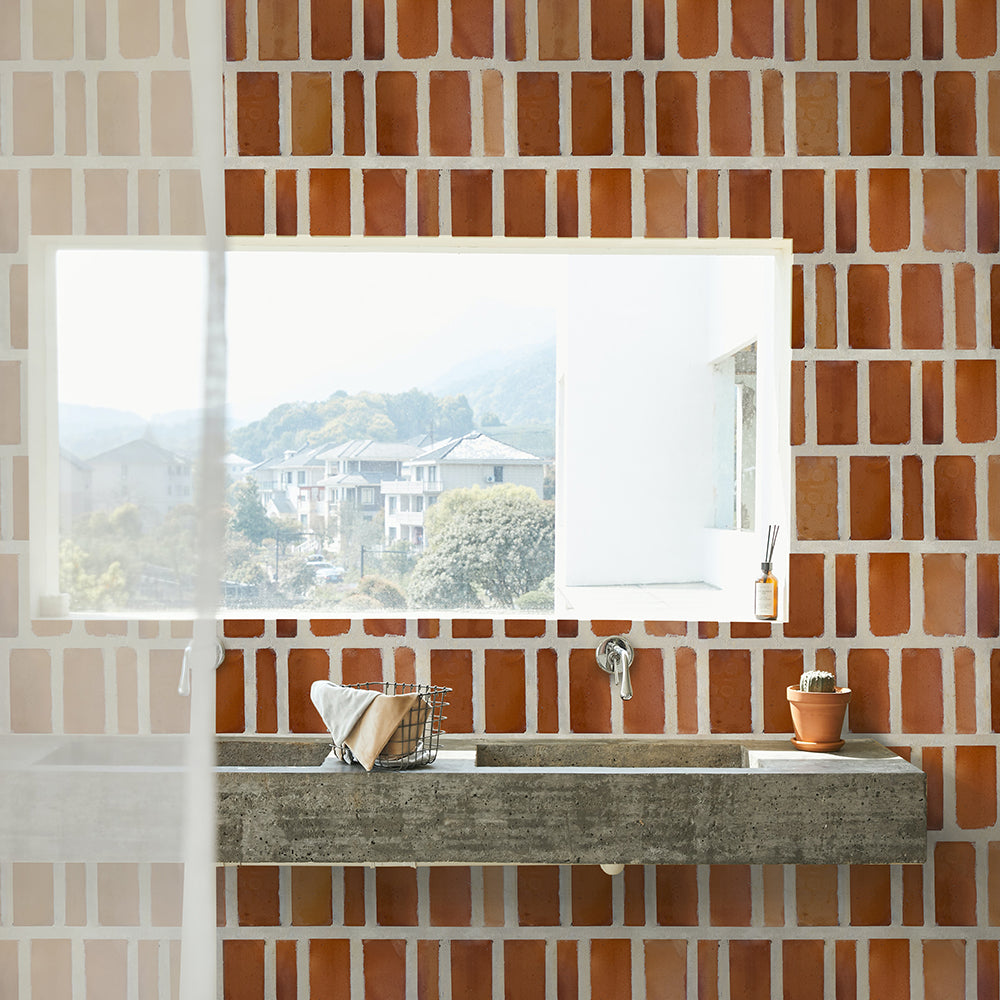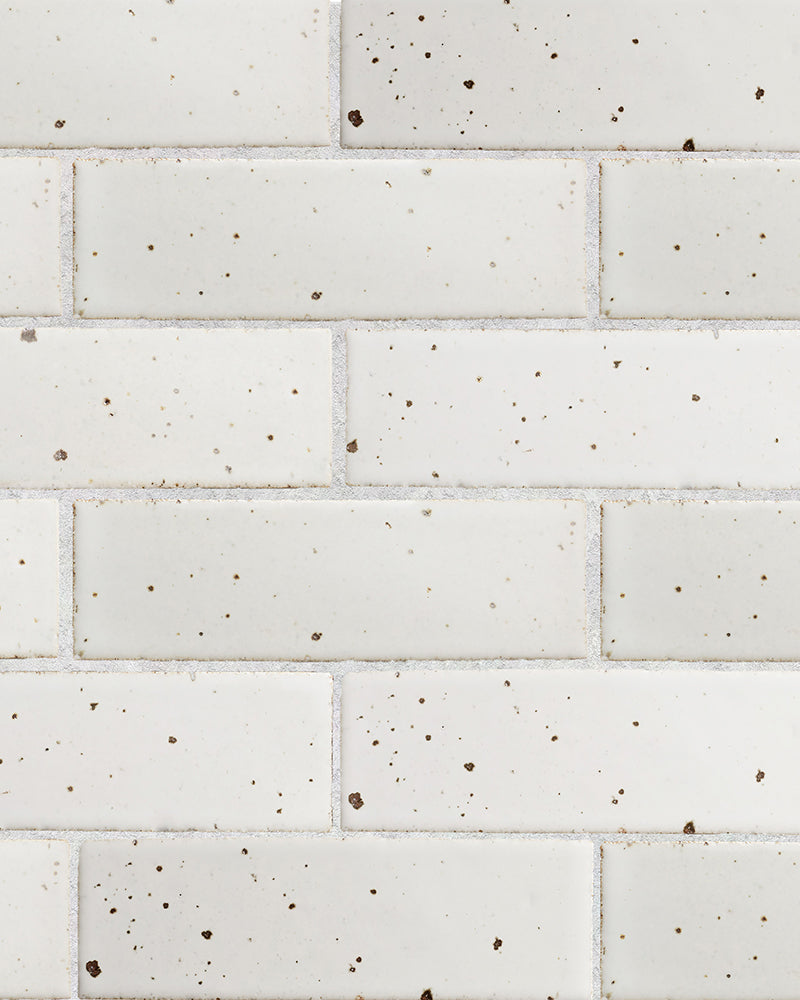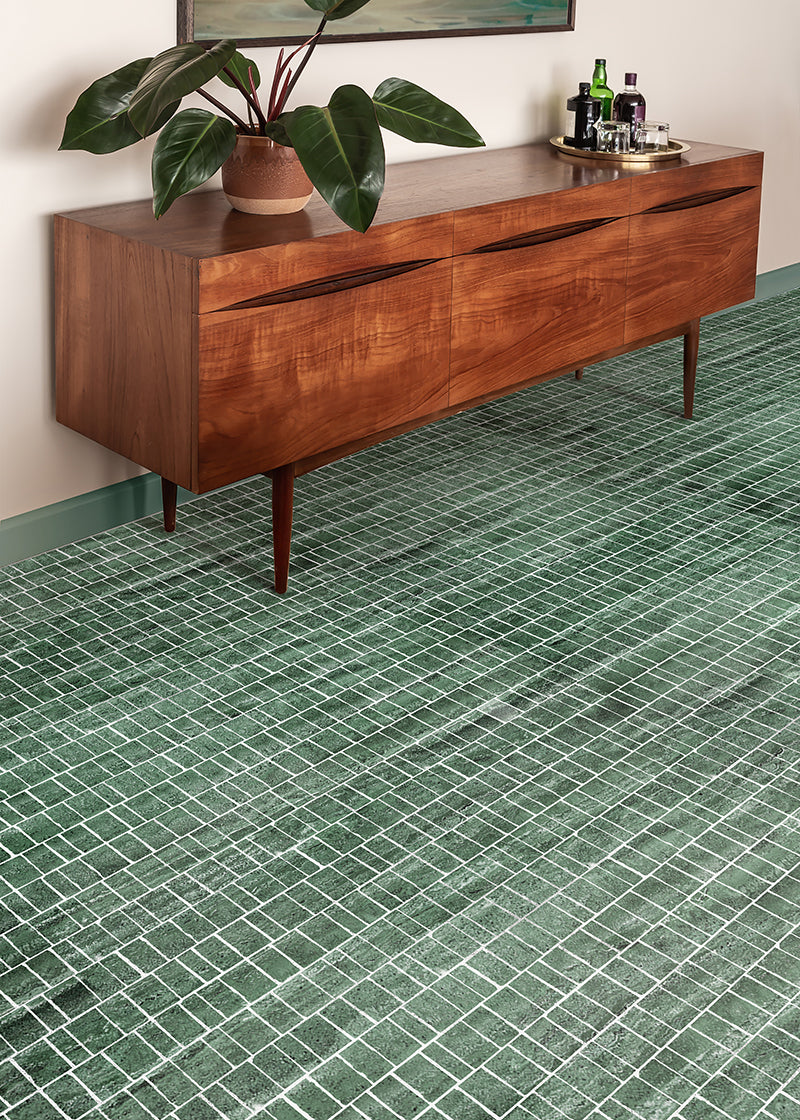your guide to optimal tile spacing for every project
by clé tile | published: Apr 24, 2024
you finally decided to tackle that renovation you've been dreaming about. but now that you've narrowed down your tile choices, you realize you have no idea how far apart to space your tiles.
not to worry — this is a question we see time and time again. while of course there are industry-standard guidelines, and the right contractor will offer sage advice, you do still have some options to consider. and what you choose will have a profound impact on the overall look of your space.
optimal tile spacing can range from 1/16 to 3/8 inch, depending on the type of tile, its size, and where it's going. with this guide, we’re exploring all of these considerations, including how aesthetics factor into the equation.
from glazed ceramic to textural brick, explore our curated tile collections and find the perfect foundation for your design vision.
why is tile spacing important?
we’ve referred to grout joint size, or the spacing between your tiles, as an art, and for good reason. getting the grout joint size right for the type of tile you’re installing is an art in and of itself. (industry-standard guidelines for your tile are a helpful start, of course.)
determines the overall look
tile spacing has a remarkable impact on the overall look of your tiling project. even more, where grout was once a purely functional part of the tile installation, it’s now often a major design element.
wider grout lines can highlight the tile’s layout, disguise variations in tile size, and add more texture overall. in the case of
narrow grout joints, on the other hand, put more focus on the tiles themselves and create fewer visual interruptions. the result here tends to be something more modern in appearance. too narrow, though, and you might find that the grout overemphasizes the natural size variations of your tiles.

lapidary rough cut mosaic sheet in jade green (large joint) design / photo: debra cass szidon
allows for expansion
aesthetics aside, the grout still needs to provide enough space for the tiles to expand and contract naturally with temperature changes. if the grout joint is too narrow, it won't accommodate expansion and could lead to cracking. as a general rule of thumb, larger tiles require a wider grout joint to allow for movement.
provides stability
the grout joint also lends stability to your tile installation. it protects the underlying substrate from damage and supports the structural integrity of the surface over time. properly spaced grout joints and well maintained grout have the power to extend the lifespan of your tile.
simplifies cleaning and maintenance
a grout joint that's properly sealed and the right width for your tile can make your tiling much easier to clean and maintain.
take note: excessively wide grout joints tend to collect more dirt and grime, which will require more frequent scrubbing. this is especially true if you’ve gone with a lighter grout color. narrower grout joints can minimize this extra maintenance while also limiting the area where mold and mildew can grow.
adds slip resistance
one more factor we haven’t yet mentioned is slip resistance. wider tile spacing naturally results in more grout, which can add much-needed traction in spaces that see water exposure, like the shower, bathroom, and mudroom.
how much space should you leave between tiles?
again, proper tile spacing depends on a number of factors, including the tile’s size, material, and usage. checking industry-standard guidelines is always your best bet as a starting point. that said, here’s a look at how tile size, in particular, can affect spacing.
subway tiles
the best spacing for subway tile is usually 1/16 inch grout for a clean, modern look. that’s especially ideal when using rectified or precision-cut subway tiles, as it creates a minimal, seamless appearance that emphasizes the tile layout.
you can also go with 1/8 inch for a classic, traditional look, which is also more forgiving of slight variations in tile size. this subway tile grout spacing is common in vintage-style installations or when using handmade or ceramic subway tiles with slight edge variation.
here are a few helpful tips when deciding between 1/8 inch and 1/16 inch grout lines, for subway tile spacing or any type of tile.
small format tiles
generally, when it comes to tile spacing, the smaller the tile, the smaller the grout joint. for small format tiles that are 6 inches or less in size you can expect to have a grout joint of 1/16 to 1/8 inch. mosaic tiles mounted on sheets often have a fixed 1/16 inch grout joint.
medium format tiles
for medium format tiles 6 to 12 inches in size, the spacing tends to stay at around 1/8 but can go as wide as 1/4 inch. but that doesn’t mean you can’t get creative with, say, a 3/4 inch grout joint here.
large format tiles (over 12 inches)
for larger tiles over 12 inches on any side, you could see grout joints range from 1/8 inch to as wide as 3/8 inch or more.

cement standards in 8x8” federal blue and star bright. design: dae planner design co / photo: reyna robyn photography
factors that influence tile spacing
now, let’s consider a few more factors, including tile type, pattern, and usage.
tile type
the type of tile you choose will directly impact how much grout space you need. ceramic, porcelain, and cement tiles, for example, tend to be more uniform in size, allowing for narrower grout joints. we also recommend a relatively narrow 1/16 inch grout joint for our terrazzo tile collection.
zellige benefits from a grout joint slightly larger than 1/16 inch to highlight the natural variation of the tile. our stone tile, meanwhile, tends to see 1/8 inch grout joints, while brick tends to see 3/8 inch grout joints. for our belgian reproduction and antique terracotta tile, we recommend a 1/2 inch grout joint or larger to account for the variation in tile size.
tile size
as we mentioned earlier, smaller tiles tend to have smaller grout joints, and vice versa. but it really comes down to industry-standard guidelines. on all sizes of natural stone tile, for example, we recommend 1/8 inch grout joints, except for mosaic tiles that come mounted on mesh sheets.
tile pattern
the pattern and layout of your tiles will also affect spacing. a basic grid pattern where all tiles are laid in the same direction can handle a tighter spacing. diagonal patterns or tiles laid in multiple directions can benefit from more grout space to ensure the angles and edges line up attractively.
room usage
consider how the tiled space will be used. on floors, wider tile spacing can help absorb movement and prevent shifting due to heavy traffic. in water-exposed areas like the bathroom, wider grout joints for floor tiles have the added benefit of offering increased traction.
in areas that see high temperature fluctuations, wider spacing can also accommodate any temperature-related tile movement.
aesthetics and design
ultimately, with best practices in mind, your tile spacing is up to you. keep in mind that no matter what spacing you choose, proper grouting and sealing techniques, carried out by an experienced installer, are equally important for a durable and attractive installation.

zellige hexagon in tea ceremony. design: michelle lisac interior design / photo: jennie corti photo
when to use tile spacers
tile spacers are essential when you want consistent, professional-looking grout lines between tiles. they help maintain uniform spacing during installation, ensuring tiles don’t shift or crowd each other as the adhesive sets. this is especially important with ceramic, porcelain, or subway tiles, where symmetry and alignment are key to a polished finish.
using spacers also makes it easier to plan your layout and avoid last-minute adjustments or uneven gaps.
you should always use tile spacers when working with tiles that aren’t self-spacing or when your design calls for specific grout line widths—like 1/16 inch for a sleek look or ⅛ inch for a classic finish. they’re also crucial when working on walls or vertical surfaces, where gravity can cause slipping.
whether you’re installing floor tile, a kitchen backsplash, or bathroom walls, spacers help you stay precise and save time on rework.
when to use narrow tile spacing
there are a number of scenarios where narrow tile spacing makes sense. if you’re installing smaller mosaic tile, or a more uniform tile such as ceramic tile, 1/16 inch grout joints are an excellent choice. smaller tile spacing, where possible, can also allow for easier cleaning.
if you’re installing, say, large marble field tiles to create the illusion of a large stone slab, narrow tile spacing can minimize the visual interruption of grout lines. craving a sleek and modern look? narrow tile spacing can help you get there.
when to increase the space between tiles
increasing the space between your tiles offers a number of practical advantages. larger grout lines can accommodate wide variations in tile size, for example, or lend a more rustic or dramatic look. they also increase slip resistance in moisture-exposed areas like the bathroom and patio.
in spaces where the tile will see heavy traffic and/or temperature fluctuations, wider grout joints can also create room for movement and expansion, extending the life of your tile.
tile spacing considerations for different tile materials
when it comes to spacing tiles, the type of tile material is key. ceramic, porcelain, terrazzo, and cement tiles typically require the smallest gaps since they have little variation in size. for these tiles, you’ll usually see 1/16 to 1/8 inch of space between tiles.
stone tiles like marble, limestone, and slate have slightly more variation in size, so they work best with a grout joint of about 1/8 inch. this allows for some irregularity while still achieving an even surface.
brick tile, whether glazed or unglazed, tends to have an even wider grout joint of about 3/8 inch. terracotta can vary depending on the tile, ranging from 1/8 inch all the way up to 1/2 inch.
mosaic tiles in any material, made up of small individual tiles mounted on a mesh sheet, typically only need minimal spacing since the mesh provides stability. often, this spacing is fixed at 1/16 inch.
special considerations for handmade tiles
handmade tiles often vary slightly in size and shape (and tile thickness–here’s a guide to help you choose), giving them a distinctive, artisanal look—but also requiring extra care to get the tile joint right during installation. because of their irregular tile edge, these surfaces usually need a wider tile seam (often 1/4 inch or more) to accommodate tile variation and ensure a visually balanced layout. using tile spacers may not always be effective; instead, installers often adjust spacing and tile alignment by eye to maintain a consistent overall rhythm.
it’s also important to dry-lay handmade tiles first to plan the arrangement and mix tones and textures evenly across the surface. their glazed surfaces may be more delicate or prone to crazing, so using a gentle adhesive and sealing both tile and grout afterward is often recommended. these special considerations help preserve the charm of handmade tiles while ensuring a durable, well-finished result.
choosing the right tile grout spacing is key to achieving a polished, long-lasting finish. whether you’re working with sleek subway tiles or rustic handmade pieces, or mixing and matching different tiles, taking the time to plan your grout width ensures both beauty and durability. (understanding how much extra tile to buy is also crucial.) with the right tile spacing guide, your tile installation will not only look professional—it’ll stand the test of time.
elevate your space with clé’s curated selection of artisanal tiles—crafted to bring beauty, character, and longevity to every surface.


